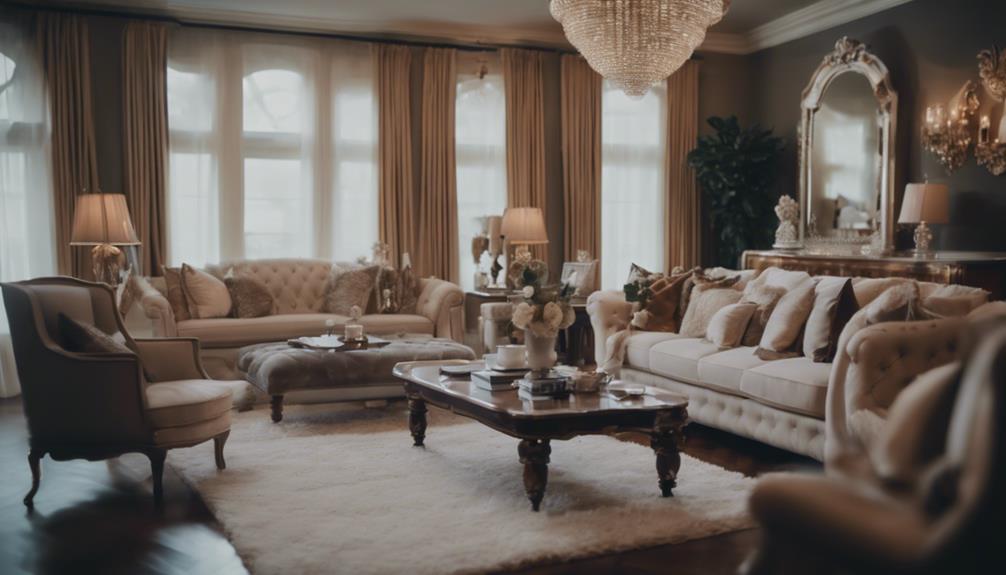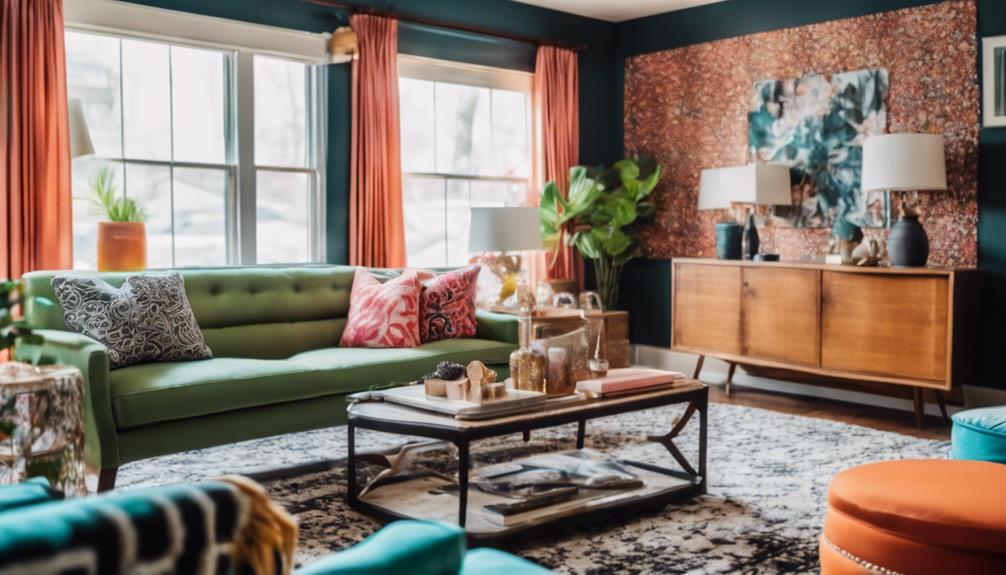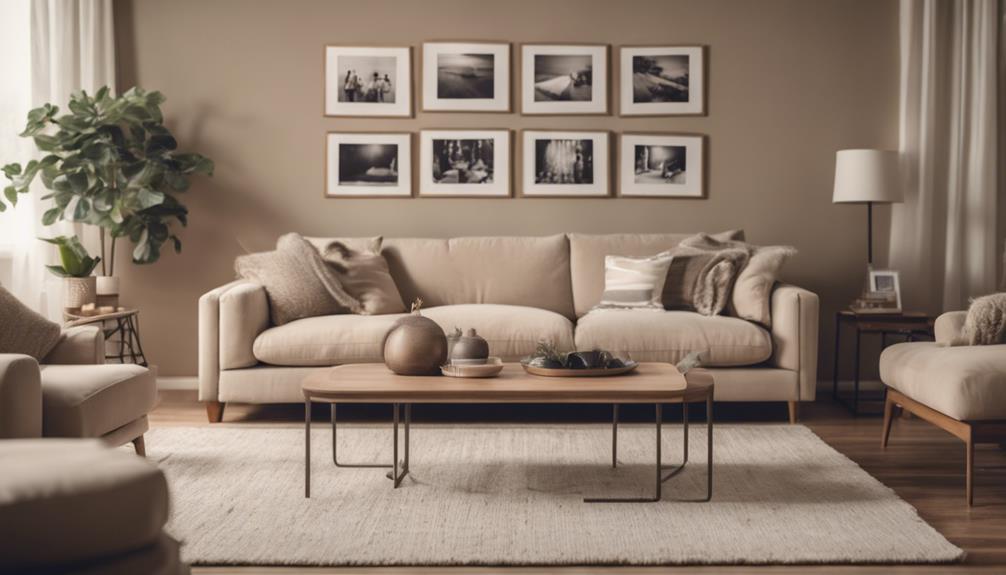Staging a house is a strategic move aimed at increasing its market value and accelerating the sale process. While it typically requires an investment ranging from $300 to $600, the enhancement in property appeal often justifies the expense.
The process demands careful planning and consistent maintenance to keep the home looking pristine, which can be particularly challenging in households with children or pets. Staging transforms a lived-in home into a buyer-friendly environment by depersonalizing it, though this may temporarily lessen your emotional connection to the space.
Nevertheless, the benefits of making your home more attractive to potential buyers can significantly outweigh these considerations, making staging a crucial strategy for a swift and profitable sale.
Cost Implications of Home Staging
When staging a house, it's crucial to recognize its potential to significantly increase property value and accelerate the selling process. Although initially perceived as an added expense, with typical costs ranging from $300 to $600, the investment can be highly rewarding. Factors such as the home's location, size, and market price can influence these costs, but the return in terms of quicker sales and higher selling prices often outweighs the initial outlay.
Employing professional stagers can be particularly beneficial; they enhance a property's appeal through expert design and layout strategies, although this may involve additional fees for consultations. Furthermore, renting furniture to achieve an appealing aesthetic is a common practice, with monthly fees—such as $2,000 to $2,400 for a 2,000-square-foot home—adding to the overall investment.
Despite these costs, the strategic advantage of presenting a well-staged home in the real estate market is undeniable. It not only captivates potential buyers faster but also positions the property at a higher value bracket, making the financial considerations a worthwhile aspect of the home selling strategy.
Time-Consuming Process of Staging
When considering the advantages of staging homes to increase their market value and accelerate sales, it's essential to recognize the effort involved in the staging process. Properly staging a home requires detailed planning and execution, including strategically arranging furniture and fine-tuning the decor to enhance the property's appeal. This investment of time and attention, although significant, plays a crucial role in transforming a property into a more attractive and marketable space. For homes that are occupied during the selling process, ongoing maintenance is necessary to maintain the staged appearance, adding to the commitment required. Despite these demands, the effort put into keeping a staged home in pristine condition often pays off by making the property more appealing to potential buyers, thereby facilitating a quicker sale at a potentially higher price.
| Benefits of Staging a House |
|---|
| Enhances property appeal and marketability |
| Can increase home value |
| Helps in selling the property quicker |
| Requires ongoing maintenance for occupied staged homes |
| Demanding but rewarding process to keep in showroom condition |
Potential Buyer Intimidation From Staging

Staging a house effectively can significantly enhance its appeal, thereby increasing its value and accelerating the sales process. By presenting a home in its best light, staging can captivate potential buyers' imaginations, showcasing the property's full potential.
An impeccably staged home not only highlights its key features and utilizes space efficiently but also helps buyers visualize their future lives within these walls. This emotional connection can be pivotal in their decision-making process.
However, it's crucial to maintain a balance in staging to ensure the home feels warm and inviting, not just picture-perfect. By creating an inviting atmosphere, staging encourages buyers to explore the space comfortably and imagine it as their own, effectively reducing the time the property spends on the market.
Thoughtful staging prioritizes both aesthetic appeal and a genuine sense of home, making it an indispensable tool in the real estate market to drive quicker sales and higher offers.
Difficulty in Maintaining Staged Appearance
Staging a house effectively can significantly enhance its market value and accelerate the selling process. However, maintaining the pristine condition of a staged home can be particularly challenging when the house is occupied.
The presence of children or pets often complicates the upkeep of the carefully arranged decor, as daily activities can easily disturb the ideal setup. Any noticeable deviations from the staged look can disappoint potential buyers, who expect to encounter a flawless environment during viewings.
Continuous effort and meticulous attention to detail are crucial to preserve the aesthetic appeal of the staging, necessitating ongoing vigilance and maintenance. Yet, this high level of upkeep can prove demanding and often unrealistic for daily life, leading to a noticeable disconnect between the staged setup and the practical needs of the residents.
Homeowners must therefore strive to find a balance between comfortable living and maintaining an attractive presentation to ensure the home remains appealing to prospective buyers.
Limiting Buyer Appeal With Staging

Effective staging can significantly enhance the appeal of a home to potential buyers, creating an inviting atmosphere that highlights the property's best features. When buyers enter a well-staged home, they can more easily envision themselves living in the space. Thoughtful decor and strategic personal touches help demystify the living experience, making the home feel warm and welcoming. This emotional connection is crucial in the decision-making process, as a staged home that resonates with buyers often feels more livable and attractive.
Moreover, proper staging emphasizes the key attributes and potential of the property. Instead of being distracted by personal belongings or dated decor, buyers can focus on the layout, size, and functionality of the home. This clarity allows them to appreciate the true value of the property and imagine how they might tailor the space to reflect their own style and preferences. By removing the guesswork and presenting a clean, appealing version of the home, staging can play a pivotal role in reducing the time the property spends on the market and can potentially increase its sale price.
Ultimately, well-executed staging fosters a strong connection between the home and potential buyers, enhancing their interest and willingness to make an offer.
Risks of Misleading Buyers Through Staging
Staging a house effectively is a powerful strategy to enhance its appeal and potentially increase its value, facilitating a quicker sale. Highlighting the best features of a property through thoughtful staging can captivate potential buyers' interest by showcasing a well-maintained and aesthetically pleasing environment. By arranging furniture to maximize space and choosing appealing decor, sellers can create an inviting atmosphere that suggests comfort and functionality.
Effective lighting and tasteful decoration can accentuate the property's strengths, making it more attractive to buyers who are often looking for a place that feels both inviting and livable. Staging can also demonstrate the potential of a space, helping buyers visualize themselves living in the home, which can lead to quicker sales decisions.
However, it's important to maintain honesty and transparency during staging. While it's beneficial to present the property in its best light, sellers should avoid misleading potential buyers about the property's condition or features. Accurate representation ensures that buyers remain confident in their purchase, contributing to a smooth transaction.
Restrictions on Personalization With Staging

When staging a home, the primary goal is to enhance its appeal to attract a broader range of potential buyers, thereby increasing its market value and reducing the time it spends on the market.
Although staging involves depersonalizing the space by removing personal items and adopting a more neutral aesthetic, this strategy is crucial for highlighting the home's best features and allowing buyers to envision themselves living there.
While this may temporarily diminish the homeowner's personal connection to their space, the focus is on transforming the home into a canvas that appeals universally. This approach not only potentially raises the property's value but also speeds up the selling process by making the home more appealing to a larger audience.
Balancing between a clean, inviting presentation and minimal personal touches ensures the home feels welcoming while still allowing buyers to imagine their own lives unfolding within its walls.
Conclusion
In conclusion, when considering staging a house, it's essential to evaluate both its advantages and potential pitfalls.
While staging can enhance the appeal of a home, increase its market value, and accelerate the sale process, it also involves certain considerations. These include the financial investment, time required, maintenance during the listing period, and the possibility of not appealing to all buyers.
Additionally, overly staging a home might lead to unrealistic buyer expectations or may limit the buyer's ability to envision their personal touch in the space.
Therefore, it's important to make an informed decision that aligns with your goals and financial plans in the real estate market before proceeding with staging your home for sale.

